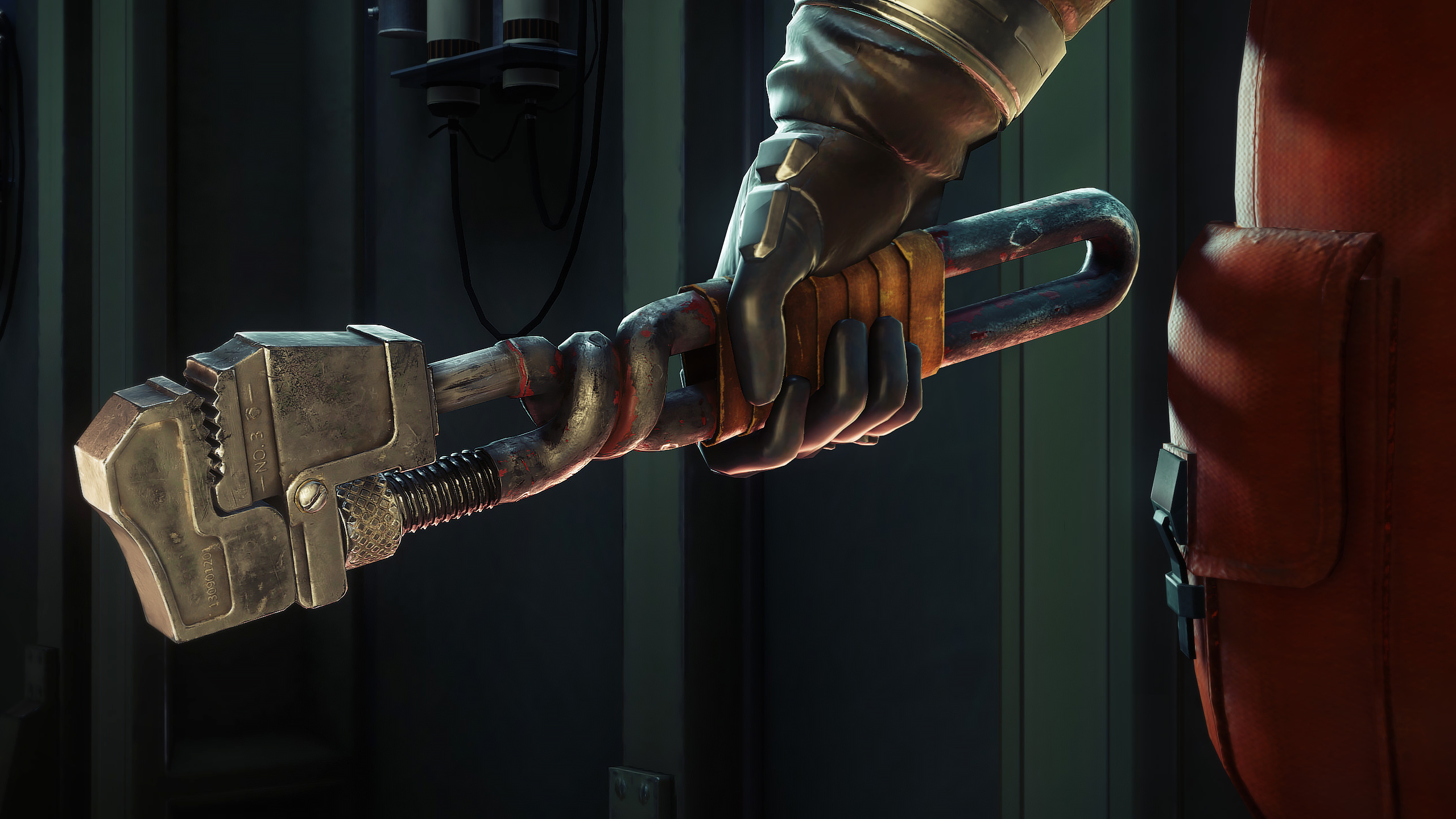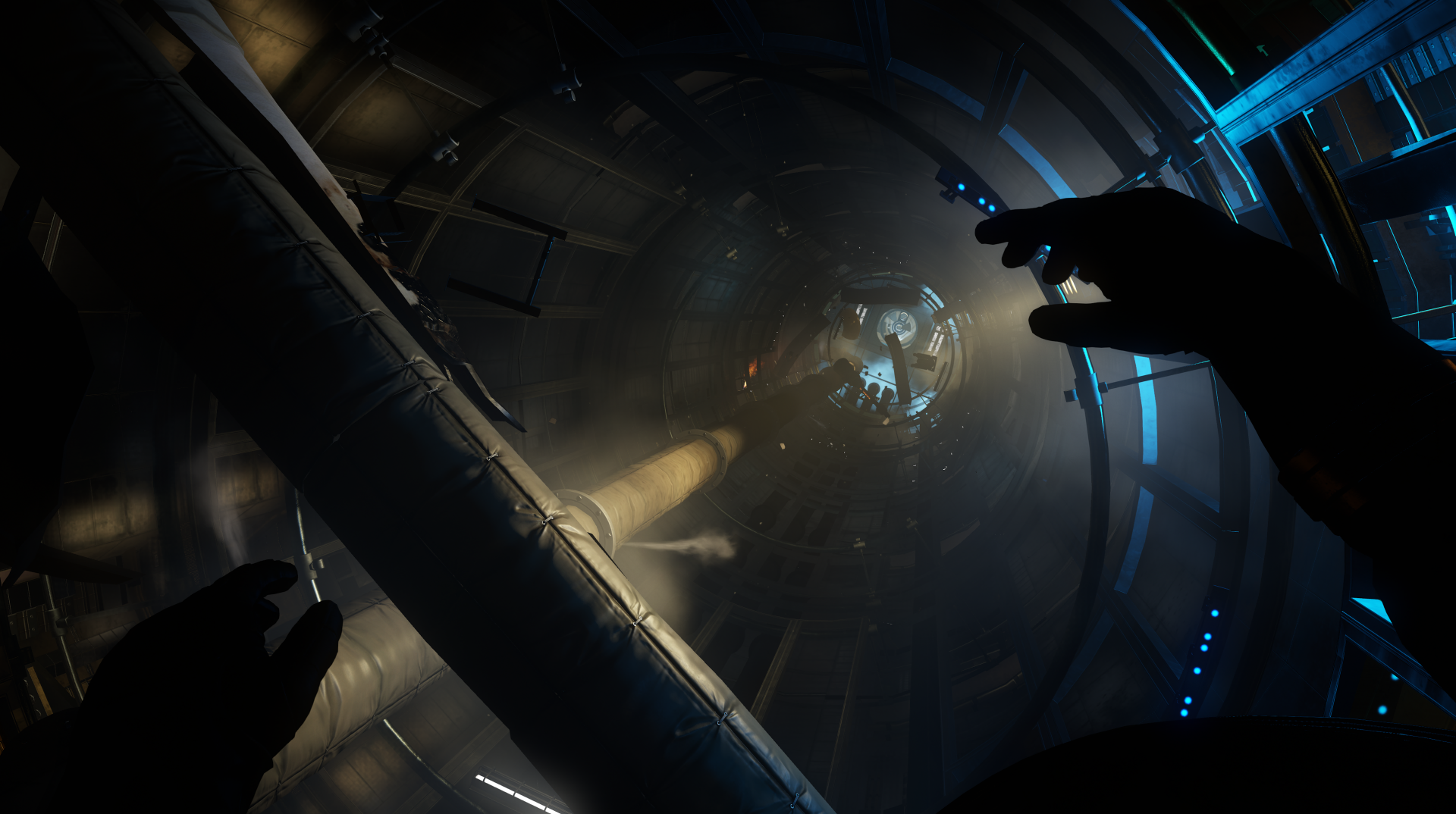Prey channels the spirit of System Shock
Arkane's RPG draws inspiration from the king of sci-fi immersive sims.

If you've been paying attention to PC Gamer's coverage, you may remember Prey as the game in which you can turn into a mug. That was the exciting revelation from this year's Quakecon—the footage of which is now available online. Last month, I got to visit Arkane Austin and see a little more of the studio's next immersive sim. Where the initial footage focused on the powers, here I saw more of how Prey will differentiate itself from Dishonored. It's not just the setting. With Prey, Arkane is looking back to its history.
Arkane founder Raphael Colantonio describes immersive sims as a spectrum. If Dishonored is focused more on the action and stealth side, Prey is more of an RPG. The comparison made is to Arkane's first game, Arx Fatalis. Prey is still first-person, but its progression and crafting systems are more focused on specific character builds, and the combat is slower and more deliberate. In terms of lineage, if Dishonored is a descendant of Thief, Prey is a descendant of System Shock.
The most obvious difference is that Prey isn't a stealth game. Rather, it's an RPG with stealth. Much like Bioshock, you won't be able to take down the most powerful enemies with a single sneak attack—at least not without speccing for critical damage, or upgrading your wrench. Instead, the most useful application for stealth is to scan Prey's shadowy aliens—called Typhon. Scanning Typhon lets you learn their resistances and weaknesses, and can also add alien powers to your upgrade tree. This is how you're able to transform into a mug, via the Mimic skill that lets you target and take on the form of any nearby physics object.

Other powers include Kinetic Blast, which creates a physics blast that can damage enemies and propel objects across the room; Remote Manipulation, which pulls objects towards you; Lift Field, which creates a column of ascending force to trap or lift enemies and objects. Not all of the powers come from Typhon, however. There are skill trees for more basic immersive sim style powers—from hacking to being able to lift and throw larger boxes. Deus Ex says hello.
If Dishonored is a descendant of Thief, Prey is a descendant of System Shock.
The trick here is that Prey's economy pushes you towards a preferred playstyle. It's not a case of wanting to do a non-lethal playthrough, as in Dishonored. In Prey, a combat focused route means upgrading skills related to combat, and spending crafting resources on 3D printed weapons and ammo. A more ability-centric build means spending the same resources crafting Neuromods and PSI—like mana, but for spacefolk. This gives you the potential to unlock more powers, and the resources to use them.
I'm shown the benefits of both styles. In one section, set in the GUTS—the zero-gravity service tunnels of the Talos I orbital space station—protagonist Morgan Yu must navigate nests of Cystoids. These are, in essence, the Typhon's security system. They detect and chase after any moving objects, exploding on impact. During an early section, you can slowly drift past. But as the Cystoids become more numerous, more creative solutions are needed. The answer, in this playthrough, is Kinetic Blast. By detonating a blast near some debris, the detritus is sent flying across the room—sending the Cystoids into action.

Later on, Yu arrives at a locked door. This is the classic setup—with multiple ways past depending on your build. If you've found the code, you can use it. Alternatively, you can hack it. Here, Yu has neither the skill nor the knowledge. Instead, he uses an EMP bomb to disable a fan that winds around the side of the room in question.
Keep up to date with the most important stories and the best deals, as picked by the PC Gamer team.
It's the range and power of the tools and abilities that has me excited. Few seem to be about just attacking an enemy. Most are multipurpose, and offer at least some way to manipulate the environment. Take the GLOO Cannon. It shoots foam darts that solidify around an enemy, disabling it. But it can also create blocks in the world that can be climbed, or used as cover. This one tool offers multiple applications, and many can be combined in exciting ways.
Elsewhere in the demo, I'm shown a section of the Crew Quarters. Here, Yu faces off against a Telepath—a powerful Typhon that is able to mind-control other beings. There are survivors on Talos I, and it matters if Yu kills them or not. He can—Yu is able to kill main characters, in what Prey's lead designer Ricardo Bare refers to as a hat tip to Ultima Underworld—but doing so will have consequences. There's no Chaos system in place. Rather, there are natural consequences to being a jerk. Simply put, if a character is dead, they won't be able to fulfil their purpose later in the story.

Yu is able to keep the mind-controlled survivors alive by using a stun gun, at which point it's time to fight the Telepath. With no upgrades to sneak attack, it's a long, protracted fight. First, he uses a shotgun, but it jams thanks to the way Talos I's weapons are cheaply printed. Yu then switches to Kinetic Blast. For the most part, combat has a weighty BioShock-y feel, but there are a couple of twists. When aiming powers in the Psychoscope, for instance, time stops—giving you time to plan out your next action. At these moments, as in Superhot, time moves when you do. Also, there's a jet booster that lets Yu quickly dodge away.
Everything I've seen so far suggests and impressive and memorable sci-fi immersive sim.
The battle takes a turn when Yu disables the Telepath with the GLOO Cannon, and switches to the Psychoscope to scan it. This lets him unlock the Psychoshock ability, which disables its powers—making the latter half of the fight much easier. Each of the Typhon has a special ability—some of which you can learn. So far, in addition to the Telepath, I've seen Poltergeists, which can turn invisible; Phantoms, which can create duplicates of themselves; and Mimics, which turn into various objects.
A slower paced experience to Arkane's more recent games—be it Dishonored or Dark Messiah of Might and Magic—this feels like a fascinating attempt to take on the System Shock style. Moreover, the abilities suggest an incredible variety and scope. It looks like it will be fun to manipulate. It's hard to be sure without getting actual hands-on time, but everything I've seen so far suggests and impressive and memorable sci-fi immersive sim that's learning the right lessons from games such as System Shock 2, Bioshock and Ultima Underworld.

Phil has been writing for PC Gamer for nearly a decade, starting out as a freelance writer covering everything from free games to MMOs. He eventually joined full-time as a news writer, before moving to the magazine to review immersive sims, RPGs and Hitman games. Now he leads PC Gamer's UK team, but still sometimes finds the time to write about his ongoing obsessions with Destiny 2, GTA Online and Apex Legends. When he's not levelling up battle passes, he's checking out the latest tactics game or dipping back into Guild Wars 2. He's largely responsible for the whole Tub Geralt thing, but still isn't sorry.

